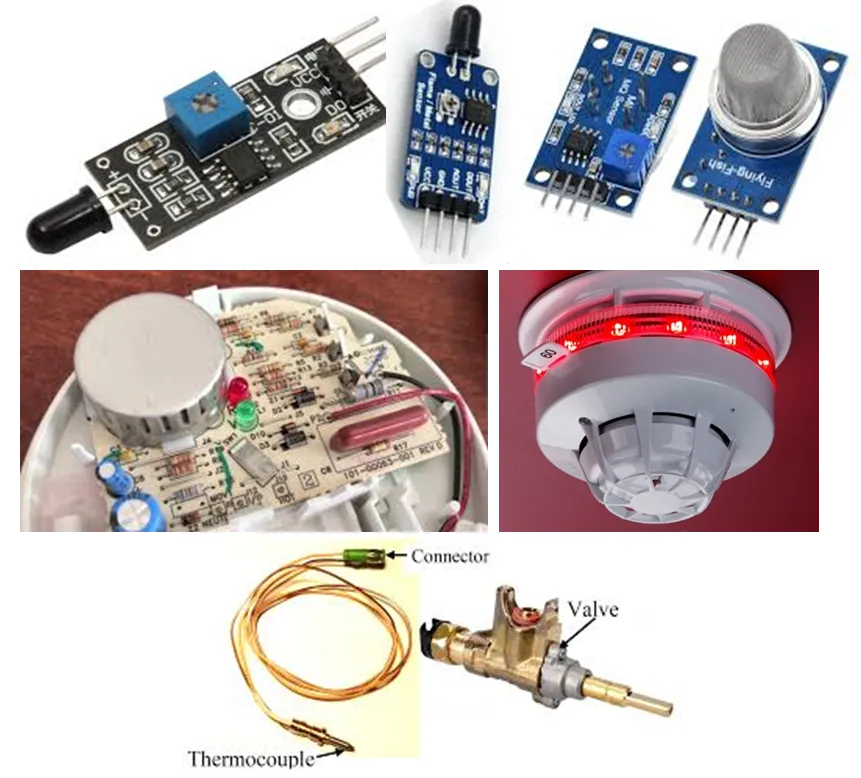Fire Sensing Technologies: A Review
The advancements in sensors, electronics, information communications, and technologies in the building industries have shifted the focus on developing smart buildings and systems worldwide. The intelligent building is equipped with instrumentation, information, and communication technology (ICT), including fire detection, buildings security, lighting, environment monitoring, power management, building health management, cooling, cooking gas management, heating, water management, ventilation and much more essential features. Digitalization has reduced the operation cost and improved the building standard. However, the advancements in materials and insulation technologies and their extensive use in buildings have increased fire risk, raising demand for robust fire sensors. It has led to advanced fire sensing and detection technologies.
The fire sensor’s primary goal is to detect early fire with less false positives and issue an early warning. The existing fire detection system consists of fire sensing parameters, sensor signal conditioning and amplification circuit, a processing unit, alarm, an evacuation path display unit, and sprinklers. The multisensor approach for fire sensing consists of suitable algorithms like fuzzy logic and neural network. In case of a fire hazard, an alarm gets activated.
Different fire sensing technologies have grown over the period, some still exist and some are out-dated. The four main fire sensing technologies with heat, air quality, flame, and smoke sensing detected through visual and non-visual techniques are still in practice. In recent years, sensors-actuator technology is breakthrough advancement in real-time measurement of fire.
In the conventional sensors, thermistor based electronics and infrared based technology are used for heat sensing. The available gas sensors are the semiconductor, catalytic bead, photoionization, infrared, and electrochemical. Other gas sensing technologies are optical, acoustic, gas chromatograph, and calorimetric. Depending on their spectra, sensors used for flame sensing is UV, visible, and IR.
The two types of surveillance cameras, IR cameras and visible cameras are more reliable in detecting flame and smoke than the conventional sensors. Usually, the conventional sensors are installed on walls or ceilings, and fire mostly starts from the floor. It takes time for heat, smoke, flame, or gas to reach up to activate it. The probability of false alarm is high and human monitoring is required. Cameras provide image signals in different formats like RAW, RGB, YUV, JPEG, etc. These signals are then processed using algorithms to predict a fire or non-fire frame.
Microwave radiometers and Surface Acoustic Wave (SAW) sensors help detect the fire under severe and harsh conditions. While the microwave radiometers are suitable for fire detections in open areas like the forest, the SAW sensors are useful to industries, aerospace, and other fields.
The mobility provided with robots in fire detection has opened new research domains and has overcome the limitations of fixed fire sensors. Firefighting robots are designed for narrow region operations, remote operations, obstacle clearing, smoke removal, and fire extinguishing. It has cameras, and infrared FLIR fixed on it to collect fire information. Though robots cannot replace human intelligence, it can minimize the risk to firefighters’ lives.
Fire sensing is a complex process. The complexities arise due to its different stages, dynamic appearance, colors, emission spectra, combustion fuels, and location. An inclusion of IoT features, the use of fuzzy logic, and deep learning-based algorithm can improve the performance of the existing fire detection system.
Research is in progress to develop the localized fire detection system by collecting the optimized data from sensors and electrical cables. An early fire prediction system is what is desired. It will provide signal to the remote monitoring and control stations using IoT techniques. In case of fire, it will use the Global Positioning System (GPS) to geo-locate and send the fire location alarm to fire rescue service, ambulance centres, and police stations on GSM. The local analyzer will be an automatic decision support device working on machine learning and artificial intelligence algorithms that will operate based on the analysis of sensors’ information of the local fire and select the desired safety operation accordingly.




